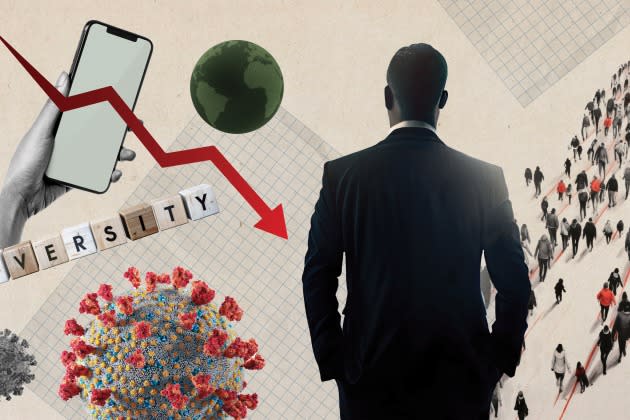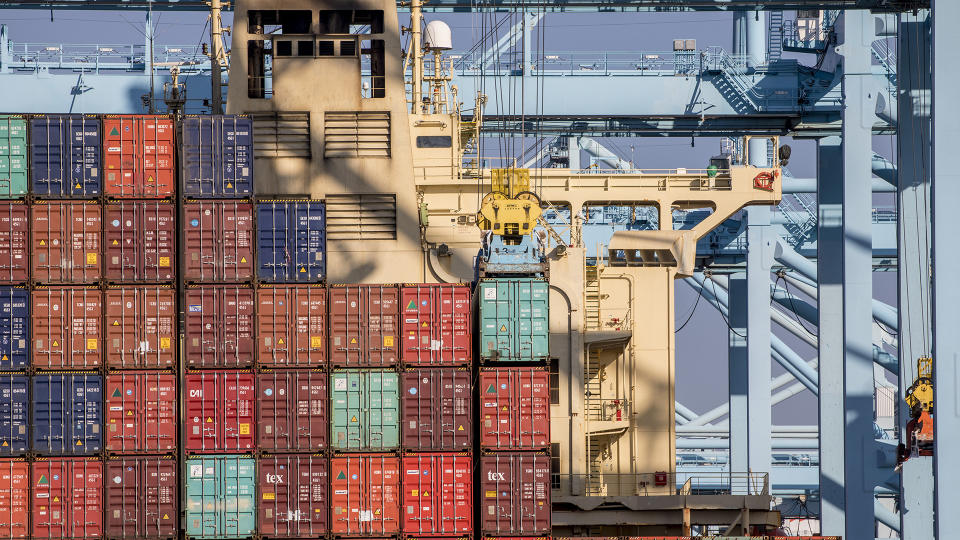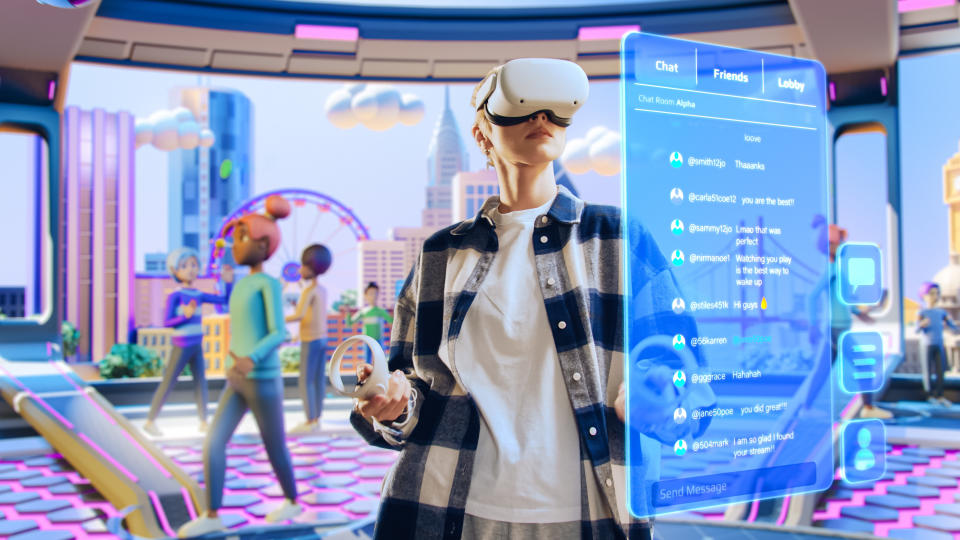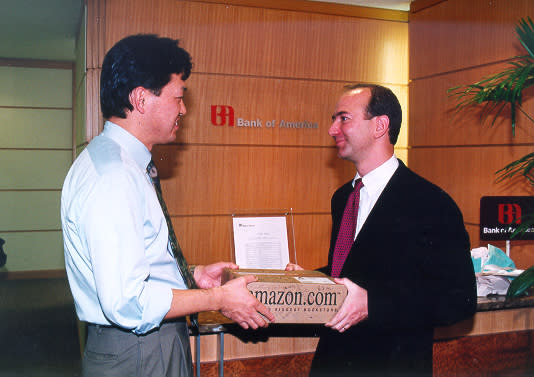Learning From the Past, Leaning Into Fashion’s Future

If another crisis happened right now — a major recession, a new COVID-19 variant or something more than a dirty brown sky from Canadian wildfires — how would corporate fashion respond?
The hope is that years of crisis and decades of fast-paced change have trained the industry’s top brass to peer around corners, to be more agile and to bring new tools to bear to solve new problems.
More from WWD
That is certainly what chief executive officers and boards circa 2023 would say they’d do.
But C-suite observers see a more jagged path forward, with CEOs who in actuality are slow to learn the right lessons from misfires, apt to rely too much on the tricks that worked in the last crisis and are generally just trying to keep up.
The world is only getting more complex and they are only human (still).

The latest worry — or maybe opportunity? — is that artificial intelligence will be the next big disruption or the right tool to solve the next problem, or both.
It’s confusing.
The one saving grace is that CEOs, while ultimately in charge, won’t have to face it alone if they can listen to the people around them.
“In Greek mythology there was Prometheus (the name implying being wise before the event) and his brother Epimetheus (being wise after the event),” said Manfred Kets de Vries, psychoanalyst and distinguished clinical professor of leadership development and organizational change at INSEAD.
“Most executives tend to be like Epimetheus,” Kets de Vries said. “We tend to extrapolate from previous experience. Most likely, although AI can be helpful, it will not make that great of a difference. Fortunately, leadership is really a team sport. Diversity will stimulate creativity — and out-of-the-box thinking.”
Easy to say, harder to do.

Fashion’s impulse to stock up on inventory and try to grab every possible sale is a good example of how easily companies can fall into even familiar traps and how the old ways don’t always suit the future.
Retailers spent years trying to get out of a vicious promotional cycle where they were repeatedly loaded up on inventory to maintain market share, but then were forced to cut price and margins to move excess merchandise.
Then COVID-19’s supply chain backups created a sense of scarcity and helped push full price sales during the 2021 holiday season. But instead of really finding full-price religion, the cycle appears to be repeating itself this spring as retailers admit to rapidly slowing sales while inventories — ordered in better times — are bloated. Get set for more markdowns.
Tricia Logan, managing partner of global consumer and retail at executive search firm DHR Global, said it’s human nature to do what’s worked before, especially given all the short-term pressures from investors, boards and so on. She also underscored the need for the people at the top to connect with others as they navigate a tough job.
“It can be kind of lonely as a CEO because you don’t really know who else to talk to,” Logan said. “You should talk to other CEOs and find out what they’re doing.”
Retailers are able to move quickly when forced. In the span of weeks in 2020, the industry learned how to reinvent on the fly, working from home, transforming stores into delivery centers, instituting curbside pickup, connecting with shoppers online and more.
“They certainly learned their lessons in terms of reacting quickly and the ability to drive change in a short period of time,” Logan said. “It’s test and learn and fail fast. You get in, you test it, you see if it works. If it doesn’t work, you move on.”
While retailers were able to do that during the pandemic, it is a mentality that she said the industry still needs to more fully embrace.
“It goes back to, what is the culture of the company? Do the leaders, does the board, embrace change? Are they willing to allow failure? I think that’s a question,” she said. “You need an agile people leader in your CEO role who is willing to take chances and embrace change and it sets that culture, that acceptance. If that culture doesn’t exist, they’re not going to be able to try new things.”
But while the CEO might embrace change and test and fail, Wall Street — in its quarter-to-quarter judgments — might be less forgiving. And there is also a difference between trying new things and embracing change and betting it all on some kind of master reinvention.
Ron Johnson’s experience at JCPenney is instructive. The Target Corp. and Apple Inc. veteran brought a bold new vision to the traditionally promotional department store — everyday low prices, new marketing, a store redesign — and ultimately tried to do too much, too fast. More recently, another Target vet, Mark Tritton, tried to rework the beleaguered Bed Bath & Beyond in dramatic fashion, but it also proved to be too much.
The trick seems to be to mix the old and the new, to maintain the core of what helped make a company successful while always exploring and dabbling in what comes next and being ready to pivot.
“We often are reacting two years too late to a change,” said consultant Ben T. Smith IV, who leads the communications, media and technology practice at Kearney.
To get ahead, Smith said CEOs need to focus when looking at the future, giving an executive the resources to go work on the next new thing with an eye toward learning along the way.
“What you don’t want to do is have your entire executive team caught up in the shiny object,” he said. “If you’re running a $100 billion company, you don’t want a bunch of people running around chasing new ideas all the time.”

Smith said the draw of the next big thing can be strong, with agencies and tech companies pitching top executives by saying things like: “If you’re not doing NFTs, you’re just an idiot.”
The key when going after a new area is to not just test, but learn, he said.
“Really saying, when you make a bet and it didn’t work, ‘What were your assumptions?’” Smith said. “You’ve got to have written them down because people have very short memories. ‘What did you believe when you did it?’”
Those short and concise memos on why this bet or that bet was made in the first place will let companies go back and see just where they went wrong and, hopefully, figure out how to not go wrong again.
“I don’t believe there’s a single new idea in the world,” Smith said. “There’s only, ‘Why now?’ Why did Uber happen when it happened? It happened because there was a phone in everybody’s hand. Life is about timing and being too early is as bad as being too late. If you make a bet too early, you become resistant to making the right bet later. A lot of retailers made big bets early” in technology.
Retail was well aware of the rise of the web, but slow to believe in the potential of e-commerce after early efforts sputtered.
Merchants doubled down on stores after the tech bubble burst in 2000 and powered out of the recession that followed the 9-11 attacks, ultimately using old tools to gain share in the old world while Amazon steadily took over the future.

There were any number of retailers that could have stepped in then to become online rivals to Amazon. Instead, the industry stood flat-footed and it took more than 20 years until Walmart finally reoriented itself to provide Amazon a real challenge.
Last week, at a meeting with analysts, Walmart CEO Doug McMillon ruminated on the transition over the past several years to a much savvier omnichannel player.
“We were store experts and we recruited e-commerce expertise and technology expertise in a variety of ways, including acquisition,” McMillon said, referring at least partially to the 2016 acquisition of Jet.com. “And if you fast-forward to today and you hear how people think and what they know, including the people that are here and our broader group of merchants and operators, they are omni now. There’s a digital language.”
That same kind of shift from one era to the next might well be playing out now — the economy is in flux, AI is widely being touted as the biggest change since the iPhone and consumers are evolving fast.
Whatever the future is, it will be different and require a melding of new and existing skills.
“It’s the classic story of, ‘What got us here, won’t get us there’,” said Donncha Carroll, cofounder and partner at Lotis Blue Consulting.
“The workforce that organizations have in place today is not going to get them to where they need to go,” Carroll said. “I’m not saying you can’t take those same people and re-skill them and up-skill them. These people are very valuable because they understand the industry. But the skills that they need to be successful in the future are different. CEOs and C-suite executives are generally finding it hard to see around the corner on this.
“What they’re not doing is thinking about how the nature of work itself is going to change,” he said. “Who are these new organizations that we’re looking to compete with? How is this market going to change?”
“Blue skying” the future and understanding where a company needs to go will help CEOs get people working toward that goal and not just reacting, he said.
It’s a tall order, one that requires both the flexibility to move with the current market and the ability to stretch and grow into the next one.
And it isn’t always easy to know just when changes — or the right kind of changes — are happening.
Carroll offered one sign-post today that can offer some read on just how much a company is evolving.
“Have you doubled the size of your analytics team?” Carroll said. “What are they working on and what have they accomplished? What have you done specifically with your supply chain?”
But while new tools and new challenges ascend, some old-fashioned realities will remain true.
Branding expert Martin Lindstrom said retail CEOs need to “build a channel that’s not only top down, but bottom up” to communicate with shoppers.
He recalled a story about Neiman Marcus’ Stanley Marcus, who installed a red telephone in the company’s Dallas flagship that rang through to his office so customers could weigh in to him directly.
“That red phone doesn’t exist today, even though it should,” Lindstrom said.
As it is, retail CEOs have to not only guess what the future will be and figure out a way to get there, but they also have to decide how they want to be seen to be moving through the world.
“The most important question to ask yourself is, Do you want to be ahead of the curve or do you want to catch up once it’s safe to catch up?” Lindstrom said, adding that nobody’s going to get famous for playing it safe.
“Increasingly, retailers have given up being ahead of the curve and they’re catching up,” he said. “If you want to be ahead of the curve, make a strategic decision initially and say, ‘You know what, we want to be known for this one innovative move this year.’”
To keep ahead of tomorrow, CEOs have to start somewhere and bring about some of their own change — before the rest of the world forces that change on them.
The Need for New Ideas
Lotis Blue Consulting’s Donncha Carroll lays out the problems with trying to use old ideas to face new challenges.
Challenge: Developing a viable business strategy.
Yesterday’s Solution: Building fixed strategies and operating plans that are executed sequentially and unchangingly.
Why That Won’t Work: The pace of change in the business landscape today means that starting assumptions often won’t hold true through the plan’s rollout.
Challenge: Paying competitively for top talent.
Yesterday’s Solution: Benchmarking the role and paying everyone the same base salary to reflect the same scope of responsibility.
Why That Won’t Work: Variance in the skills and abilities of individuals can be significant and these translate into similar variance in their value and contribution to the business.
Problem or challenge: Technology is disrupting whole industries and business models.
Yesterday’s Solution: Wait for someone else to demonstrate success and be a fast follower.
Why That Won’t Work: Catching up will be too expensive as a competitor’s business model undermines your profitability in an accelerated timeline.
Problem or challenge: Addressing employee turnover.
Yesterday’s Solution: Specifying work requirements and hiring more staff.
Why it won’t work: Shifts in demographics and limited availability of talent mean there are fewer resources to go around.
Best of WWD


